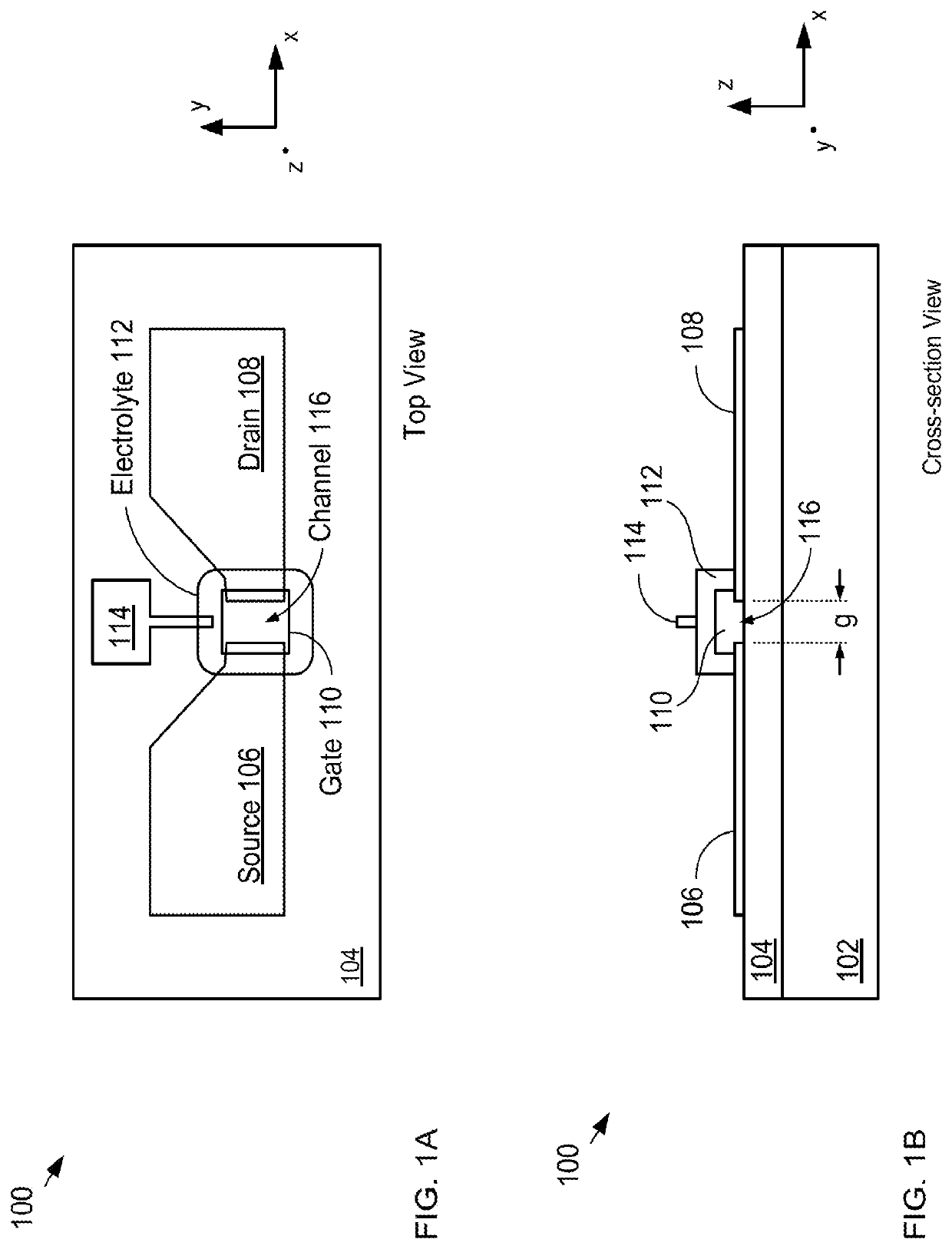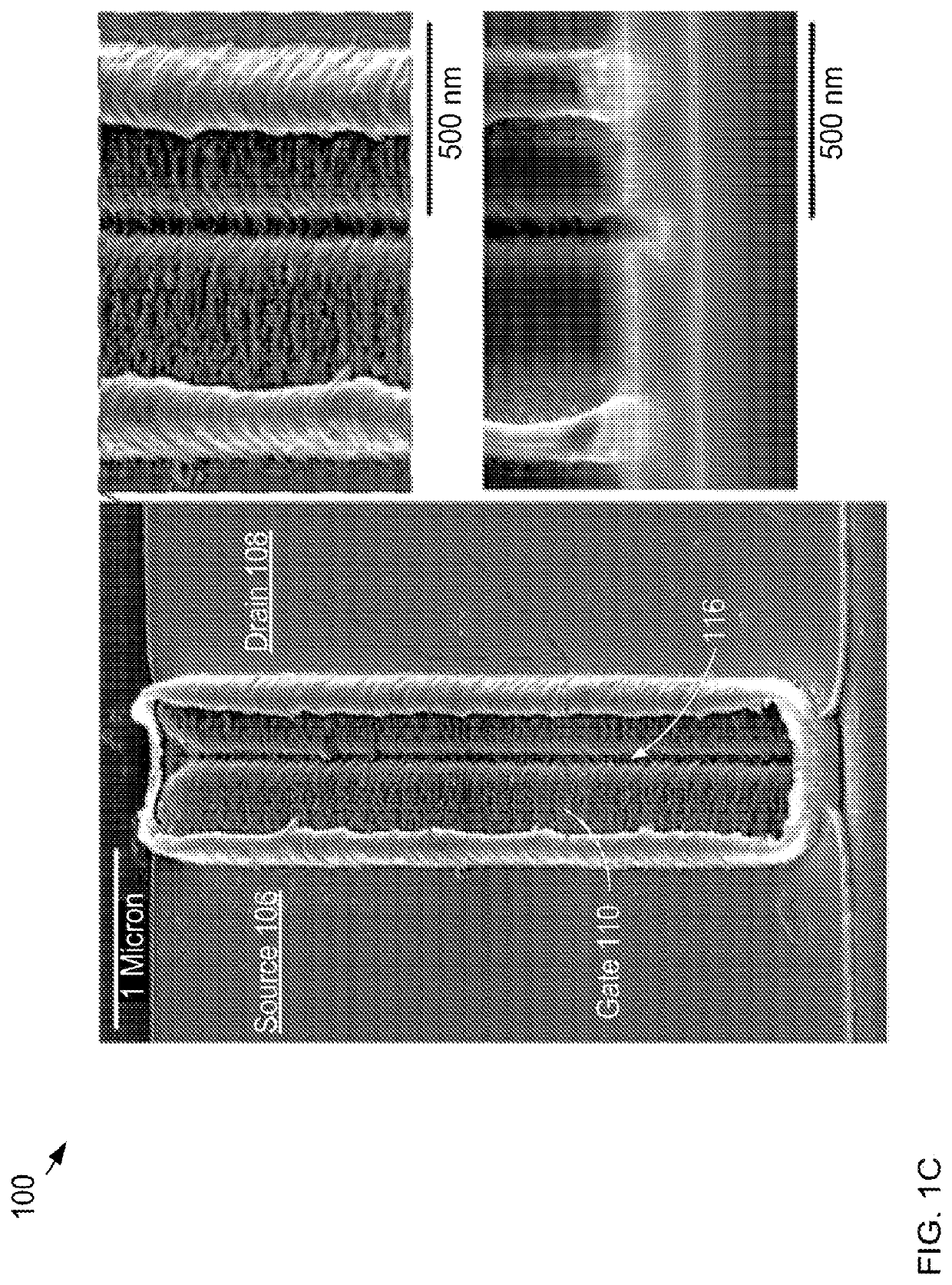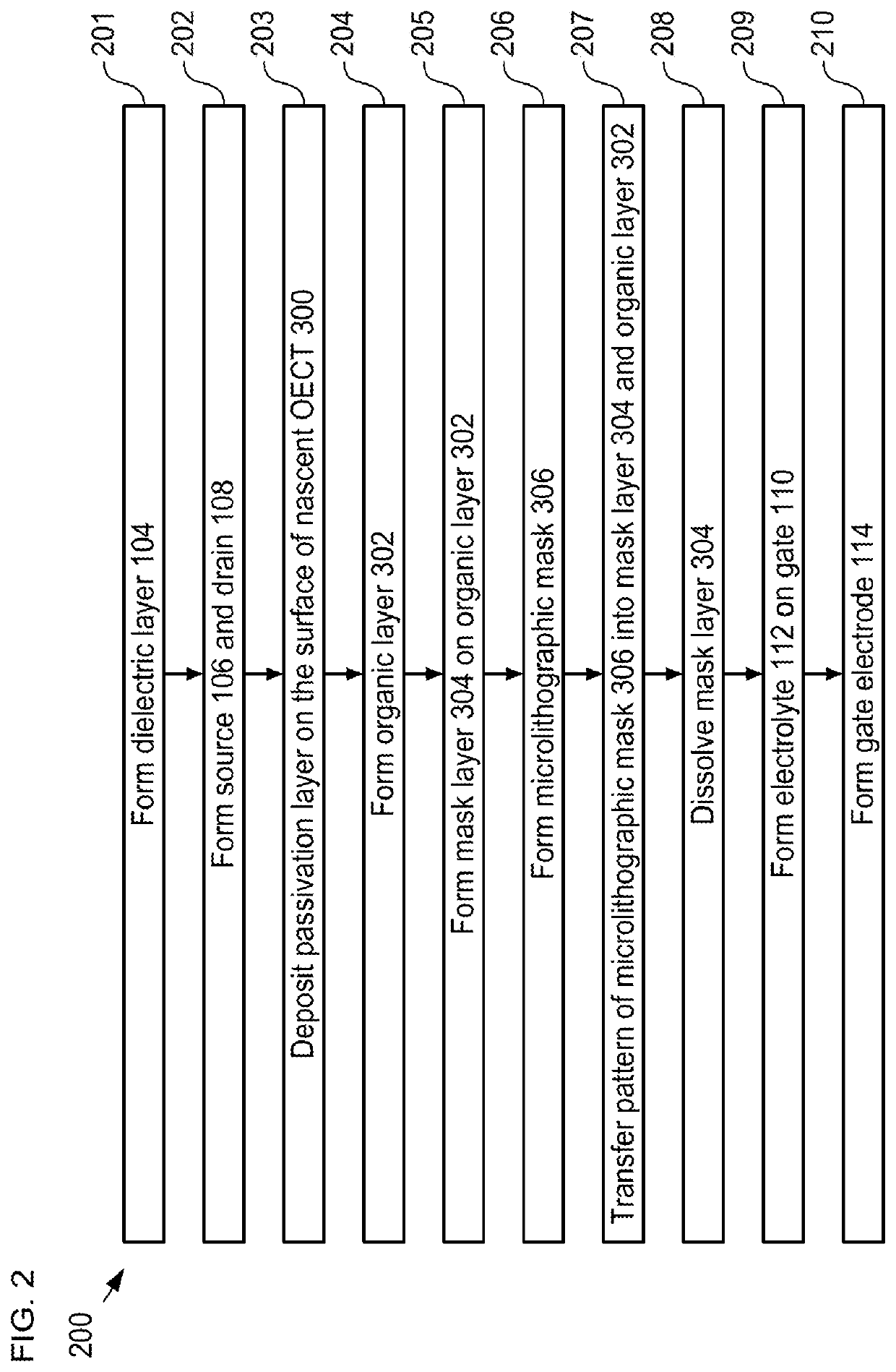Method for lithograghic patterning of sensitive materials
a sensitive material and lithography technology, applied in the field of submicron patterning of organic materials, can solve the problems of difficult photolithographic patterning, difficult stamp-based lithography and active approaches, and unreliable reliability, and achieve the effect of avoiding exposure of sensitive materials
- Summary
- Abstract
- Description
- Claims
- Application Information
AI Technical Summary
Benefits of technology
Problems solved by technology
Method used
Image
Examples
Embodiment Construction
[0026]FIGS. 1A and 1B depict schematic drawings of top and cross-sectional views, respectively, of an organic-semiconductor device formed via a fabrication process in accordance with the present invention. Device 100 is an organic electrochemical transistor that includes substrate 102, dielectric layer 104, source 106, drain 108, gate 110, electrolyte 112, and gate electrode 114.
[0027]FIG. 1C depicts photographs of a portion of device 100 at different magnification scales.
[0028]An organic electrochemical transistor, such as device 100, is a special type of electrolyte-gated transistor (EGT). EGTs are attractive for use in sensing applications not only due to their low turn-on voltage and relatively high transconductance, but also because they can be miniaturized using substantially standard fabrication processes. The device structure of an EGT is analogous to that of a regular field effect transistor (FET); however, in an EGT, the solid insulating layer of the conventional FET is re...
PUM
| Property | Measurement | Unit |
|---|---|---|
| thickness | aaaaa | aaaaa |
| thicknesses | aaaaa | aaaaa |
| thicknesses | aaaaa | aaaaa |
Abstract
Description
Claims
Application Information
 Login to View More
Login to View More - R&D
- Intellectual Property
- Life Sciences
- Materials
- Tech Scout
- Unparalleled Data Quality
- Higher Quality Content
- 60% Fewer Hallucinations
Browse by: Latest US Patents, China's latest patents, Technical Efficacy Thesaurus, Application Domain, Technology Topic, Popular Technical Reports.
© 2025 PatSnap. All rights reserved.Legal|Privacy policy|Modern Slavery Act Transparency Statement|Sitemap|About US| Contact US: help@patsnap.com



